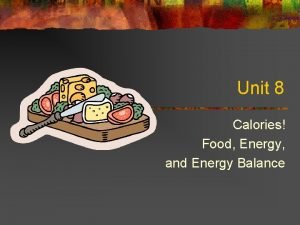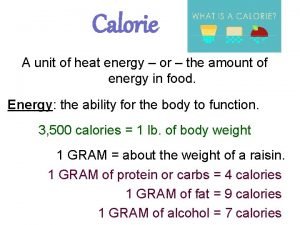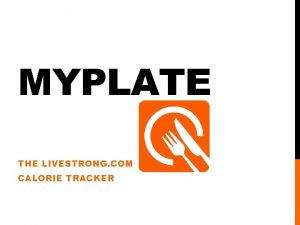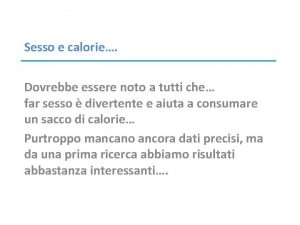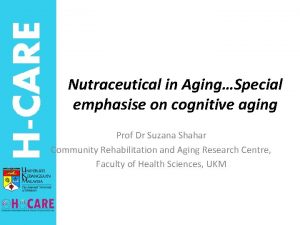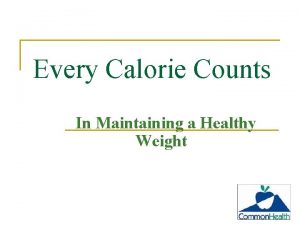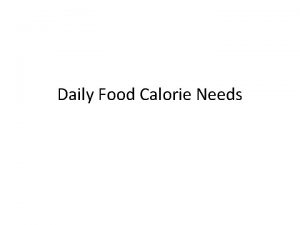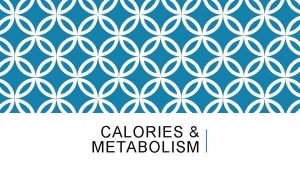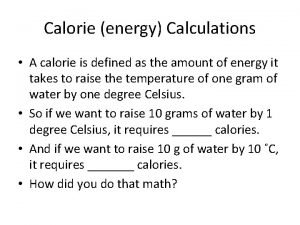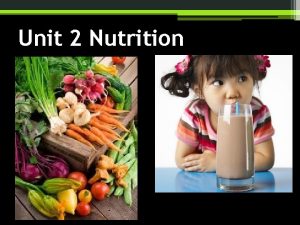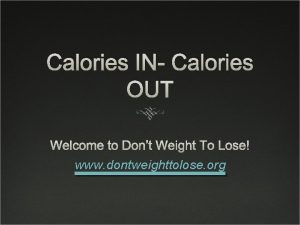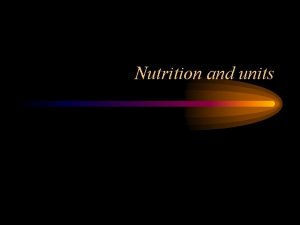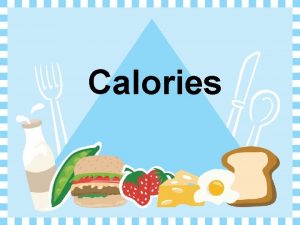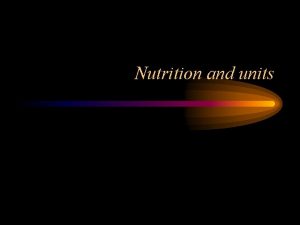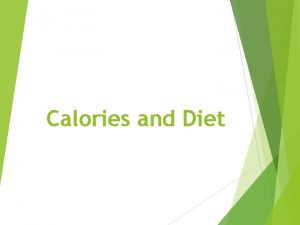Unit 11 task 2 Energy Calories A calorie












- Slides: 12

Unit 11 task 2

Energy Calories - A calorie is a unit of energy. By definition a calorie is the energy it takes to raise the temperature of 1 gram of water 1 degree. Calories are energy that fuel our bodies, without sufficient calories our body wouldn’t work. Joules – a joule is also a unit of measure of energy and 1 calorie is equal to 4. 186 joules. Kilocalories – sometimes called the kilogram calorie or large calorie, equals to 1, 000 calories. An example would be a peach, if it had 40 calories it would actually have 40, 000 calories. Kilojoules – a kilojoule is equal to one thousand joules.

Sources of energy Fats - Fats are needed every day in order for our body to function. Fat provides a source of energy, even though carbohydrates are the main source, fat is used as a backup energy in case carbohydrates are not available.

Sources of energy Carbohydrates - Carbohydrates are split up into two groups, complex and simple. Simple carbohydrates are broken down quickly by the body to be used as energy. Simple carbohydrates are found naturally in foods such as fruits and milk. They are also found in processed and refined sugars such as sweets. Complex carbs are foods which contains vitamins, minerals. Oatmeal, brown rice, potatoes, peas, beans and lentils are examples of complex carbs.

Sources of energy Protein - Simple proteins are composed of only amino acids while conjugated proteins contain amino acids. When there is a shortage of fats or carbohydrates, proteins can also yield energy. Products like eggs, milk, nuts and seafood are all high in protein and other nutrients that are good for you. Seafood is a good source of protein and are typically low in fat.

Body composition The most commonly used method of classification of the body type is known as somatotyping, which recognises three basic body types Ectomorph – a slim build, long limbs, delicate bone structure, low body fat and muscle content, usually finds weight gain difficult. Endomorph – a heavy build, rounded shape, a tendency to gain weight and generally find weight loss difficult Mesomorph – a muscular build and large bone structure.

Measuring body fat Body composition refers to lean body mass and body fat that makes up total body weight. Methods of assessing body fat percentage include skinfold analysis, bioelectrical impedance analysis and hydro densitometry (underwater weighing).

Skinfold analysis Skin fold measurement gives an indication of body composition by measuring the amount of fat immediately below the skin in millimeters. You need a skinfold caliper to do the test. As this is all you need it is fairly cheap, it is also reliable. Take the measurements on the right side of the body. Take measures from biceps, triceps, subscapular, supralliac. Pinch the skin 1 cm above the marked site. Pull the fat away from the muscle Place the calipers halfway between the top and bottom of the skinfold. Take the reading and record. Add up the total of the four measurements. Calculate body fat percentage

Bioelectric impedance analysis Bioelectrical impedance analysis is becoming a standard technique used to measure body composition as BIA machines are quick, easy. BIA measures resistance to the flow of an electrical current through the body, using the fact that different body tissues display different impedance to the flow of the current. Tissues that contain a large amount of water, such as lean tissue, provide a lower impedance than tissue such as bone and fat. One potential drawback of BIA is that impedance measurements are related to the water content of tissues, so for accurate results subjects must be fully hydrated.

Body weight is usually measured in kilograms. Some individuals have problems controlling their body weight, often resulting in obesity. Some sports are categorized based on body weight.

Calorimetry – direct and indirect Direct calorimetry – measures the actual amount of heat produced by the body. Indirect calorimetry - estimates heat production by measuring respiratory gases. The most common technique is via mouth and douglus bag collection or mouthpiece and gas analysis system, with energy consumption calculated from the amount of oxygen consumed. The consumption of 1 litre of oxygen equates to approximately 4. 8 kcal if energy expended, assuming a mixture of fats and carbohydrates are oxidised.

Age: with age your BMR reduces, after 30 it falls around 2% per decade. Gender: males generally have greater muscle mass than females, so generally have a higher BMR. Climate: exposure to hot or cold climates causes an increase in basal metabolism to maintain the body's internal temperature. Physical Activity: to estimate your total energy requirements you also need to consider your level of physical activity. The simplest method of estimating your total energy requirements is by multiplying your BMR by your physical activity level (PAL). Calculating PALs requires you to make an assumption about the energy demands of both your occupational and non-occupational activity levels.
